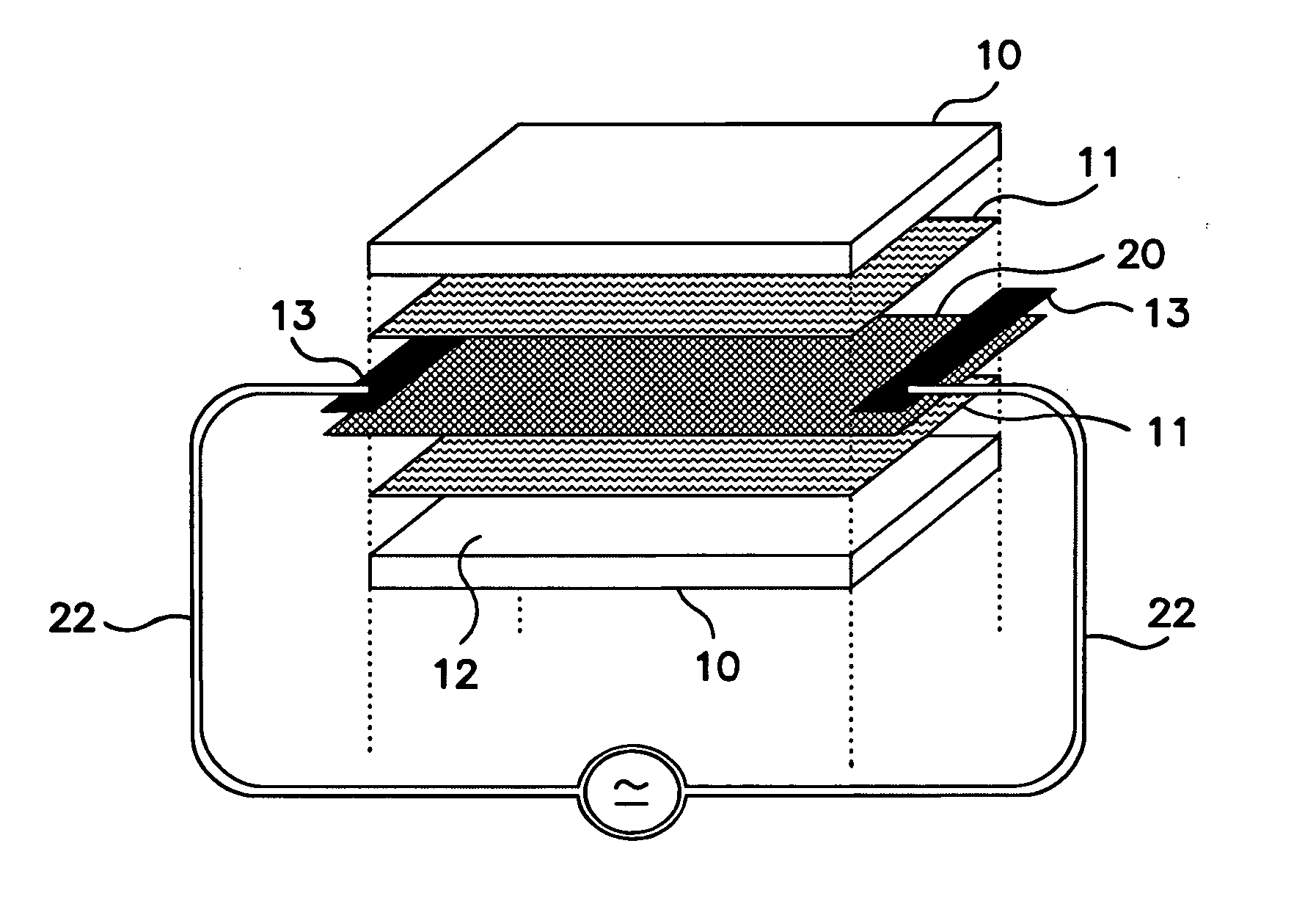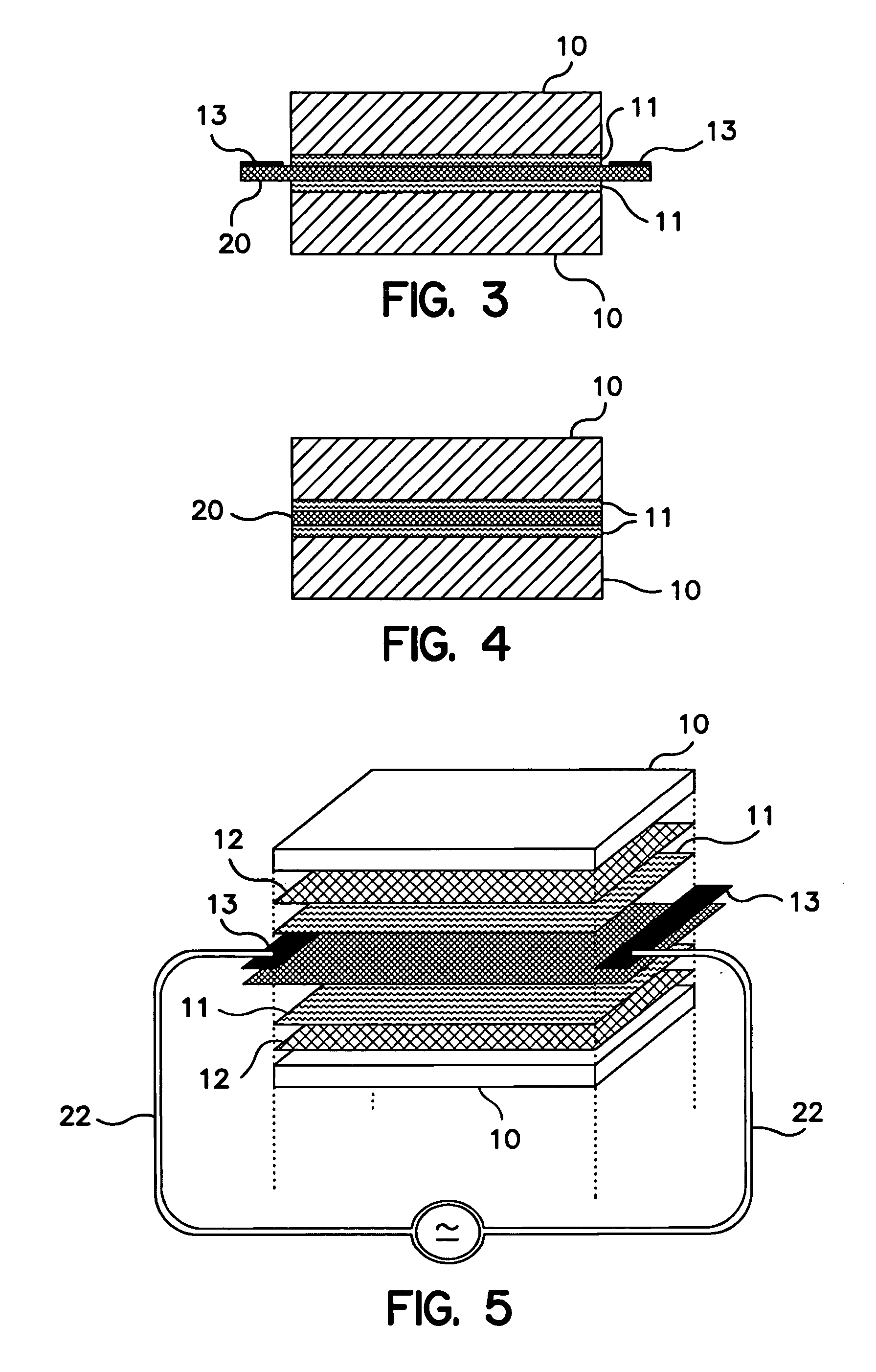Method for accelerated bondline curing
a bondline and curing technology, applied in the direction of adhesive types, ohmic resistance heating, chemistry apparatus and processes, etc., can solve the problems of increasing the time and equipment required for the proper curing of adhesives, increasing the cost of adhesives, and increasing the cost of manufacturing, so as to achieve the optimal joint properties, accelerate the curing of bondline adhesives, and improve the bond properties
- Summary
- Abstract
- Description
- Claims
- Application Information
AI Technical Summary
Benefits of technology
Problems solved by technology
Method used
Image
Examples
Embodiment Construction
[0053] The following example illustrates a bonding process of the invention.
[0054] Two aluminum sheets of 0.125 inches in thickness, 15.0 inches in length, and 7.0 inches in width were treated with a dielectric primer on the bonding side surface and covered with a Cytec Fiberite FM94M 120.degree. C. cure epoxy film adhesive, cut to the same dimensions. A Thermion.RTM. fabric heater of 10 g / m2 non-woven, carbon fiber fabric coated with 7 g / m2 nickel and cut to 16.0 inches by 7.0 inches was sandwiched between the adhesive layers ensuring 0.5 inches of the heater fabric was exposed at each end as the two aluminum sheets were brought together. Copper foil bus bars of 0.002 inches thick by 7.0 inches long and 0.5 inches wide were laid across the exposed heater fabric, and the assembly was placed within a vacuum bag (not shown). The assembly was subjected to a voltage via a PID type temperature controller and power supply sufficient to raise the structure's temperature at a rate of 3.degr...
PUM
| Property | Measurement | Unit |
|---|---|---|
| thicknesses | aaaaa | aaaaa |
| thickness | aaaaa | aaaaa |
| thickness | aaaaa | aaaaa |
Abstract
Description
Claims
Application Information
 Login to View More
Login to View More - R&D
- Intellectual Property
- Life Sciences
- Materials
- Tech Scout
- Unparalleled Data Quality
- Higher Quality Content
- 60% Fewer Hallucinations
Browse by: Latest US Patents, China's latest patents, Technical Efficacy Thesaurus, Application Domain, Technology Topic, Popular Technical Reports.
© 2025 PatSnap. All rights reserved.Legal|Privacy policy|Modern Slavery Act Transparency Statement|Sitemap|About US| Contact US: help@patsnap.com



